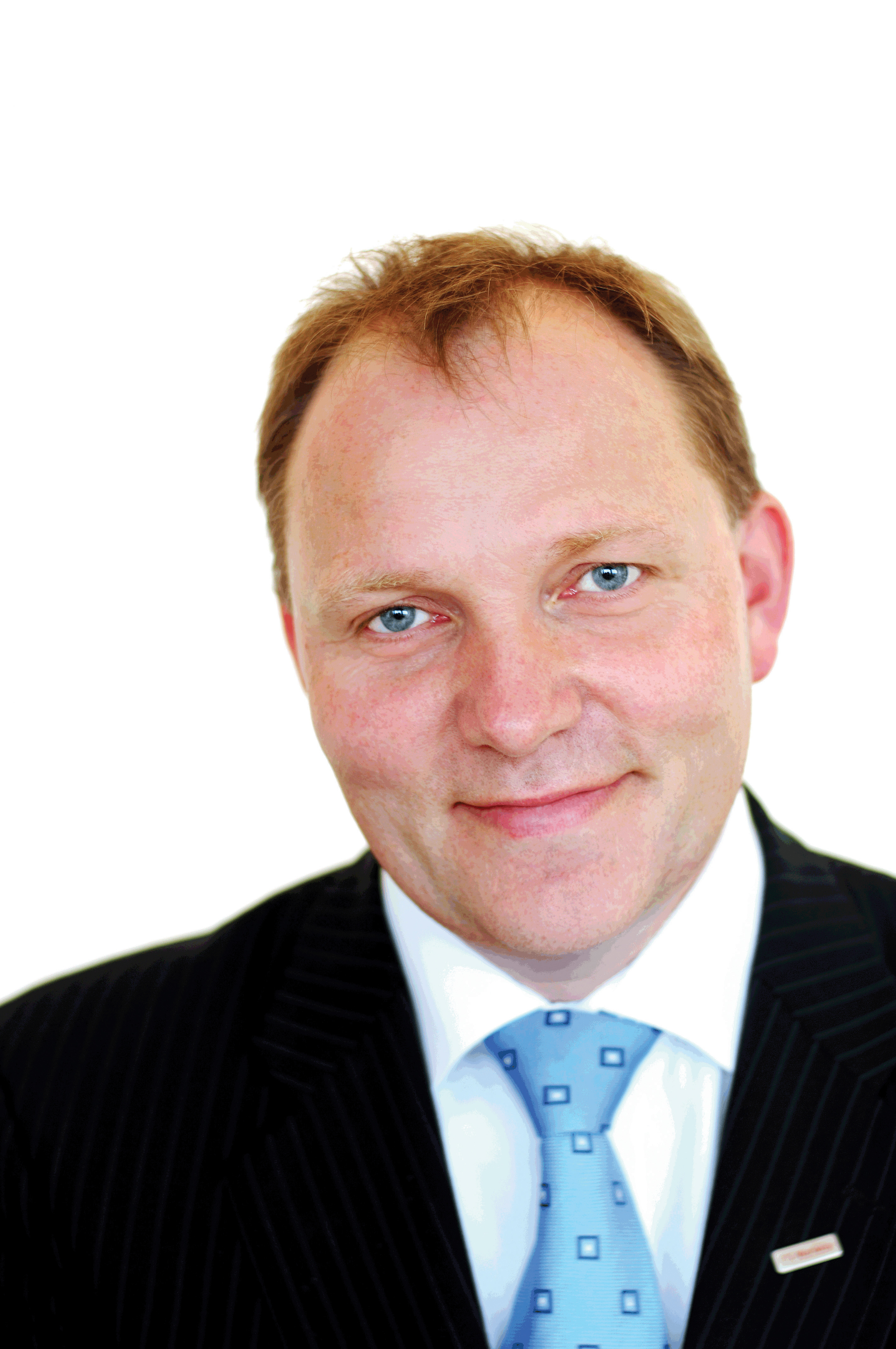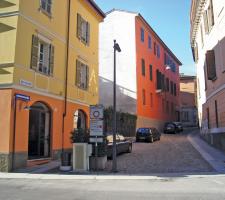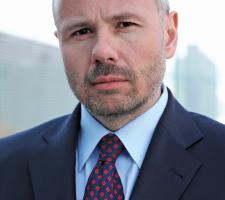
Leading systems manufacturers talk to Jason Barnes about the future of urban road tolling systems, how pragmatism is driving choices, and how education remains an issue.
A common assumption, even amongst informed observers, is that there’s but a handful of urban charging schemes in operation around the world and scant prospect of that changing any time soon. Larger city-sized schemes such as Singapore, London and Stockholm come readily to mind but if we take a wider view and also consider urban access control and Low Emission Zones (LEZs) then the picture changes rather radically. There is a notable concentration of such schemes in Europe but worldwide the number is comfortably into three figures, a majority of which are electronically controlled. Add to that the High Occupancy Toll (HOT) lane schemes which are increasingly popular in the US and now elsewhere, and the number grows still further.That’s significant, because it highlights just how widespread the appropriate technologies are. It also means that there is a large peer group, in the form of municipalities, on which to draw for advice and experience. And whilst many key decision-makers are still failing to realise that access management is also an effective tool for traffic management, we’re also seeing a significant upturn in the amount of information sharing between towns and cities, says Dietrich Leihs.
Leihs,
“Municipalities are very keen to learn from each other, in part because of national legislative requirements,” he explains. “In Italy there are over 150 schemes, the first electronically enforceable one of which went into operation at the beginning of the millennium. Things have raced ahead in the last five years. The 2008 European Clean Air Directive has been a big driver of deployments and I can see carbon zones following the same trend.”
However there remains some way to go in terms of the spread of knowledge. He cites the recent example of a major German municipality which assumed that implementing green waves would achieve the same results.
“Green waves will do nothing either to reduce overall traffic volumes or to adequately address the emissions issue,” says Leihs. “The key policy decision is: ‘Do you want fewer cars in your city?’ Once that’s been decided, you then have to tell people and garner their support.”
There are numerous examples of a ‘No’ vote for urban charging, Manchester, Edinburgh and New York, for example, but there are also schemes which have been publicly approved. Oslo’s was passed with a little over half of the population agreeing but has gained in popularity since. Milan also said ‘Yes’; as Leihs notes, Italy may be a nation of car lovers but residents recognised the air quality benefits.
Simple(r) solutions
Another big reason for shifting attitudes is that the technology used to achieve urban charging or access control has become both simpler and less costly. In some respects, municipalities’ budgets remain a foil to engineers’ propensity to create the ‘perfect’, more expensive solution. As a result, Licence Plate Recognition (LPR) technology predominates.Leihs: “Municipalities simply don’t have the money to spend on needlessly complicated solutions. Take a figurative city of around 100km2. That’s not a big area but if you want to introduce access management cost will drive certain decisions. A classic LPR cordon system is easily understood – cross a geographical boundary and you’ll be eligible to pay a fee. A distance-based GPS/GNSS solution might appear fairer, as it’s not just based on crossing a boundary, but the reality is that an LPR scheme achieves pretty much the same percentage reduction in traffic volumes. And it does so at a fraction of the cost.
“Engineers want to get on and engineer but many of them just aren’t that policy-aware. At the procurement level the discussion is over whether KPIs are being met. We’re seeing a lot more results-led thinking; decisions are being driven by policy and not by ‘toys’.
That positive pragmatism is one trend which Leihs sees enduring. We can also expect to see many of the current technological solutions stick around for a while, he feels.
“That’s not to say that we won’t see changes,” he continues, “but we can expect a long wait for them to arrive. Cars may be becoming Net-enabled via smartphones and apps but they’re not yet interoperable. Much of the information flow we see is one-way and with two-way connected vehicle technology, who’s going to pay for the infrastructure side? Take that notional 100km2 city again: it’ll have maybe 50-60km of main roads and around 30 major intersections. The cost of equipping each of those with a genuine real-time system – technology at its finest – varies hugely but could be really quite significant. What’s in it for the municipality? Increased driver comfort? No. Increased safety? Maybe…
“I’d love to use apps for urban charging but there are a couple of main obstacles even before we get to standardisation of what’s required in terms of information content. The first is that the hardware to run the app is in the hands of the user. That’s perfectly acceptable if he or she can be relied upon to do the right thing at the right time but there are issues relating to honesty or malice on the human side and viruses on the technology side. In short, there’s an obstacle of trust for municipalities.
“The second, in the European context, is that legislation states any service must not discriminate between or against users. We haven’t yet solved the issue of roaming charges for mobile phone users, so the same service could cost non-domestic travellers significantly more. That would be illegal. Domestic road users, meanwhile, can enjoy flat-fee contracts for data transmission but only if they have bank accounts from which they can pay for services. It’s still not uncommon, especially in Eastern Europe, for citizens to not have any form of bank account.”
Leihs contends that the urban canyoning issue relating to GPS/GNSS systems (where tall, densely spaced buildings can block lines of sight to satellites – a problem which affects both tolling and navigation systems) has pretty much been solved but, he says, jammers are a problem and becoming more widespread.
“Jammers cost next to nothing and the police can’t collect evidence that one’s been used, only that a satellite-based charging system somehow didn’t work. That pushes me to say that if a system is to perform adequately then you need isolated hardware and software.
“There remain good reasons to use GPS/GNSS beyond the application of charging, however. Tracking of heavy goods and other large vehicles in order to protect old, fatigued or weight-limited infrastructure is one and we are already seeing this happening. Protecting historical points of interest from traffic’s effects is another.”
Misplaced resistance
Across Northern Europe, Steinar Furan, Adviser to The issue, he feels, is effective communication – something which Stockholm’s congestion charging scheme proves well: “There was very strong public resistance to charging in the early stages but the planners in Stockholm made sure that the scheme would work and then properly articulated their aims. Public acceptance is now at around 70 per cent, up significantly since go-live. If you have good communication, then I think the concept flies more than most politicians believe.”
He refutes the suggestion that the issue of urban canyoning for GPS/GNSS-based solutions has been solved. Rather, he says, it’s possible to build models which get around the issue but there’s still a need for expensive in-vehicle technology and the issue of effective enforcement remains unresolved. For that, gantries are needed and, infrastructurally, that puts us back on the path towards a DSRC or LPR-based solution. Nevertheless, he shares Leihs’s observations on the trend towards economically viable rather than technologically perfect solutions.
Controlling costs
“We’re going to see a much stronger focus on this. There are EU guidelines, for instance, which state that truck charging schemes must demonstrate profitability of at least 80 per cent. That also makes sense for an urban charging scheme. The message to the public is soured if you have to admit that more than half the revenues are lost in operations. Most jurisdictions which have operated charging schemes for any length of time are very aware of this. Norway’s charging schemes provide an example of what’s possible. Operating costs there are around 10 per cent. Viewed in the context of last year’s revenues of around NOK6.2bn [ca. US$1bn], that’s a lot of money left for road building and improvements.”Cost control is where Q-Free looks to focus customers’ minds because the ‘perfect’ solution involves an enormous difference in cost, he notes.
“LPR-based systems have reached the stage where their identification capabilities are pretty much on a par with DSRC. That means you can have an affordable high-performance system able to work right across a country although a shortcoming, in Europe at least, is the multiplicity of number plate types and issuing agencies; there’s big variance in the accuracy of national vehicle registers. Sweden offers domestic road users the option of LPR, with transponders where international interoperability is required. That’s a way in which we can address the issue.”
Aesthetics
In the last year, Q-Free has unveiled a single-gantry solution designed expressly for urban charging. Primarily, this addresses concerns over the impact of a more conventional three-gantry system in an urban setting but it also introduces the concept of a ‘charging zone’. This increases utility as traditionally vehicles are charged at a given point on the road. The zone concept means that all the vehicles within a defined footprint are identified and charged as appropriate, depending on their onward progress – those turning off onto a road where a charge isn’t levied will not be billed, for example, while those which carry on along a chargeable route will be. This allows the operation of chargeable and non-chargeable lanes in very close proximity, reduces the number of wrongly applied charges and, ultimately, increases public acceptance.“The ‘toolbox’ gets bigger and that means system operators can locate gantries exactly where they want, not just on long, straight sections. Such flexibility is important in urban settings,” says Furan.
Breakthrough technologies
The increasing emphasis on systems’ cost-efficiency doesn’t exclude breakthrough technologies from the urban charging equation. However, payment and enforcement have to be considered.From the payment perspective, Furan sees plenty of opportunity – it’s very simple to create new apps for use in an iPhone or Android operating environment, he notes, and these are already common for applications such as parking. From the enforcement perspective, things are a little more rigid. There’s still a need for video-based proof of a vehicle’s location and legal rather than technical requirements drive developments. Once again, that pushes us back towards the types of solutions we see now, he feels.
Another way to reduce operating cost is to reduce administration charges and we can expect to see the increasing use of self-service services, something which again links to the use of nomadic devices. Being able to drive into a foreign country, download an app and use it to make payments will simplify matters for both user and operator – as will system interoperability; Furan highlights the
“Essentially, that handles tolling charges like a
Norway has also explored something else which could shape charging’s future: the concept that there is no such thing as a violation. In effect this is discounting, with road users who subscribe and pre-pay enjoying significant financial benefits for doing so. That significantly reduces the administration burden from an enforcement perspective, changes the relationship between tolling company and customer, and has in Norway at least resulted in extremely high tag adoption.
Providing balance
In France, the attitude to urban charging has shifted from ‘Why?’ to ‘Why not?’ according to“We’re seeing support and effort to try and address the issues of pollution and congestion, and since June 2010 we’ve had the legislation in place to allow us to start experimentation in urban agglomerations with greater than 300,000 citizens.
“That legislation is very clear, though: it states that public transport networks have to be able to absorb an increase in usage as a result of charging’s implementation. If they can’t, then you’re not introducing charging, you’re just introducing another tax.”
Public opinion is, he says, finely balanced – especially given the current financial outlook: “There’s the attitude of ‘It’s just one more tax’ versus the realisation that charging could provide more fluid traffic conditions, but the real issue is whether any such system is fair or not; there are many low wage-earners who live far out in the suburbs and face a long daily commute into the cities where they work, and French politicians are very sensitive to perceptions of social discrimination. The authorities in Paris, for example, are opposed to a generic urban charging system but may look to introduce some kind of tolling on specific main arterials, such as along the banks of the Seine, to help finance public transport.”
Equity and effectiveness
Thales, he states, is there to service its customers and he emphasises the company’s project management credentials and the need to help shape thinking as to what a workable and fair solution might be. For example, he questions whether cordon-based schemes adequately address the issue of fairness, as drivers are charged simply for crossing a geographic boundary and not for the distances they travel.“Does that really address the pollution issue?” he asks. “I think that the technology used has to be able to cope with the distances driven. It has to be able to perform, it has to provide the finances needed to support wider policy aims such as public transport improvements, and it has to provide data security and privacy.”
Although Caput stresses a technology-agnostic approach, his company has invested in video-based solutions. He sees these as very much more suited to urban applications for several reasons, including the relatively light touch needed in infrastructure terms, but also because he perceives issues when it comes to the use of satellite- or DSRC tag-based technology.
“The latter requires OBUs and I see difficulties in achieving significant user uptake unless we can encourage the vehicle manufacturers to come up with embedded solutions – at least in the European context. The charging system shouldn’t have to force the vehicle to have something on board.
“We certainly see opportunities in video-based systems but still invest in and development other solutions. I think for instance that there are fewer and fewer obstacles to the use of GNSS/GPS technology in urban areas but there are issues besides canyoning to consider. These include the potential for fraud and data corruption, and we have solutions which identify and address such issues. The strong players in this sector going forward are going to be those with a large portfolio of solutions for all applications.
“But perhaps the biggest issue facing urban charging is that there are few upcoming projects. Copenhagen and Budapest have both abandoned their plans recently, for example. There is a clear trend in Europe towards the greater use of lorry road user charging, and we’re involved as a technology partner in France’s éco-taxe scheme, for instance. I think that trend will provide a spur for the entry of charging into more urban areas but I also think that we’ll see evolution, not revolution – both in policy and technology.”
Conclusions
Inevitably, any survey will produce a mixed bag of responses but there are clear trends such as the desire for simplified, inexpensive solutions. Inevitably, the balance will shift as breakthrough technologies become more reliable and issues such as enforcement are addressed. But look again at Steinar Furan’s comments on compliance – should we continue to still think in terms of enforcement? What effects will policy shifts have on technology going forward? It remains to be seen. Leihs’s observations on the high number of schemes contrast sharply with Caput’s, although both are right depending on the context in which they’re viewed. Again, it is for policy to drive adoption and indirect influences, such as carbon reductions legislation, could well be the driver for more widespread use in the future. But underpinning this all are the familiar and too-often ignored issues of education and providing realistic alternative means of mobility where vehicular access is curtailed. Without these, any attempt to introduce urban charging faces a very rough ride.
Global trends
Discerning regional variations in attitudes to urban charging is difficult, says Steinar Furan. There is a growing trend towards the use of road user charging, he sees the biggest uptake at present being in Asia. The US, the biggest single tolling market, has been less enthusiastic but has to find a new source of funding in light of dwindling fuel tax revenues. In Europe, the situation is rather more complicated, he notes, as jurisdictions look to focus more on reducing car use than on building new road capacity.
Whilst cordon-based schemes are becoming increasingly common in Europe, the same cannot be said of the rest of the world, Dietrich Leihs notes. “The US’s solution of choice to congestion is the HOT lane – a product of having the space to increase and/or adapt capacity and a luxury which many parts of Europe don’t enjoy.
“Also, the US isn’t really thinking yet in zone management terms. I don’t know when that’ll change. In emerging countries such as China and India, the situation is different again. There, parking and limited access are the major problems. Fuel costs are also having an effect, although the numbers of cars we’re seeing sold are in the millions.”
Meanwhile, Singapore’s current trials of GPS/GNSS-based technology are worthy of comment but may not result in the outcome that many presume.
“You have to remember that Singapore is not a typical East Asian city,” Leihs explains. “The people there enjoy a very high standard of living and love technology. But is the current approach to charging the right one? Well, you have to remember that what’re happening at the moment are just pre-qualification trials to determine whether GPS/GNSS is the right approach. It’s not guaranteed that Singapore will go for it. As with elsewhere in the world, it all hinges on whether such a technology-driven approach is reasonable and solves the problem it’s meant to, or whether something smaller and simpler can do the same thing. We may yet see different results.”
















